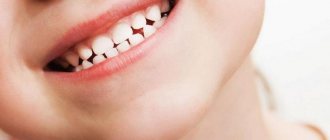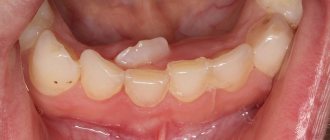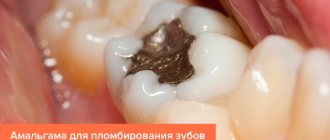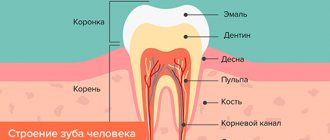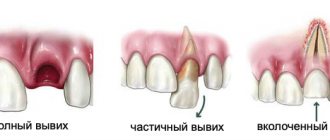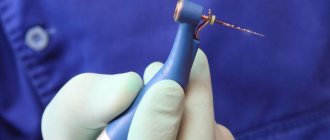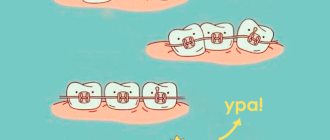Filling for a child - high quality, pain-free and at an affordable price
Most parents are reluctant to visit the dental office with their children. They perceive this as stress for the child, since they clearly remember their own childhood. In their memories, the dentist is a doctor with a stern look, cold hands and an arsenal of instruments for torture. Fortunately, pediatric dentistry looks very different today.
At the Natadent dental clinic, dental fillings for children are performed by qualified doctors, whose professionalism is manifested not only in high-quality treatment, but also in the ability to find an approach to young patients.
The following features of our clinic help us make treatment comfortable for the child:
A children's playroom where the doctor gets to know each other and spends time in a playful way with the baby before the appointment.
- friendly atmosphere in the office, preliminary communication and explanation of all the intricacies of treatment.
- use of modern tools and materials;
- local anesthesia, sedation and general anesthesia (if necessary);
- colored fillings and other playful ways to motivate a child;
- gifts after each reception
- cartoons during treatment
If you want your child to have healthy teeth and not be afraid of the dental office in the future, bring him to the Natadent clinic. Our doctors perform dental fillings for children quickly, efficiently and in a fun way. Thanks to this, the child will not be afraid and will remember that dental treatment is a short, painless and very important procedure.
Filling or silver plating
Silver ions stop the growth and division of pathogenic microorganisms. This means that caries will not develop in the future. But silvering is prescribed only in the initial stages of the disease. When large areas are damaged, it is useless to silver a baby tooth; over time, it will still collapse. A puncture may occur, which certainly will not be pleasant for the baby.
Is it possible to do a filling without a drill?
Today, medicine has made great progress and dentistry is no exception. Our clinic has ultra-modern equipment that does not produce frightening noisy sounds. In addition, filling is currently performed chemically. Its essence is the application of a special gel-like substance, which, after 30 minutes of exposure, is removed along with the damaged tissues. Then filling material is applied to this place.
Anesthesia
In order not to traumatize the psyche of children, dentists use injections extremely rarely. Pain-relieving gels and sprays are mainly used. Injection anesthesia is used only in extreme cases.
Anesthetics are selected in each individual case and are used only when there are no contraindications.
Causes of caries
- artificial feeding;
- genetic predisposition;
- poor nutrition (lack of sufficient fluoride in the diet),
- injuries;
- defects, features of the anatomical structure of bone tissue;
- poor oral hygiene;
If the development of the disease is associated with inheritance or poor health, it is necessary to regularly show the child to the pediatric dentist.
Filling baby teeth
Many mothers are sure that it is not necessary to treat baby teeth, since they are still temporary. And if caries begins to cause severe discomfort to the child, the baby tooth can be removed and you can calmly wait for the permanent one to grow. In reality, primary teeth need to be treated with care and should be treated until they fall out naturally.
Filling baby teeth is necessary because throughout their existence they perform important functions:
- help the child chew food better;
- prepare a place for permanent teeth;
- help to form the correct bite;
- necessary for pronunciation;
- participate in the formation and growth of jaws.
A child needs the ability to chew food well to be healthy and cheerful. Even small caries can form a bad habit of swallowing insufficiently chewed food in chunks. Therefore, filling teeth for children should not be postponed until later. Timely treatment will allow the child to eat better, pronounce words clearly and avoid bite problems.
Treatment of periodontitis in children
Periodontitis often develops against the background of untreated pulpitis. The inflammatory process develops in several stages and can take a long time. First, caries appears on the crown of the tooth. If left untreated, the infection affects soft tissue. If the tooth is not treated at this stage, the infection continues to spread. Following the pulp, the roots of the tooth are involved. Periodontitis develops.
At this stage, it is still possible to stop the inflammation. If this is not done, the infection spreads further and affects the buds of permanent teeth. This leads to dental problems during the formation of a permanent bite. In addition, any infection causes intoxication, which in itself is dangerous to the child’s health.
Light fillings for a child
Modern photopolymer materials used in the Natadent clinic can make dental treatment a quick and comfortable procedure, even for children. There is no need to doubt whether light fillings can be given to a child. The materials we use are absolutely harmless and do not affect children's health.
The main advantages of light fillings:
- Affordable price. Photopolymer fillings, despite all the advantages, are relatively inexpensive.
- Long service life. Contrary to popular misconceptions, light-curing fillings are strong and durable.
- Fast curing. Under the influence of special radiation, the material hardens in just a minute. Thanks to this, it is possible to place several fillings in one visit.
- Minimal tooth preparation. The viscous consistency of the polymer material allows it to reliably attach to chipped enamel and other surfaces after minimal processing.
- Completely harmless. High-quality photopolymer material is completely safe for children.
The use of light-curing materials greatly simplifies filling teeth for children, since it is difficult for a child to sit in one place for a long time (especially in a dental chair). The light filling is installed and hardens in minutes, allowing you to fill multiple teeth in one visit.
What components (materials) are used
The material for the filling is selected depending on how badly the tooth is damaged and where the defect is located. The doctor individually selects the best solution for each specific patient.
For permanent fillings in dentistry the following are used:
- Amalgams . Today, the use of various amalgams (alloys of metals with mercury) is minimized, since the use of this material for filling teeth requires a lot of time and high professionalism of dentists. In addition, the aesthetic properties of amalgams leave much to be desired - a polished filling is noticeable in the mouth. Such fillings are usually placed on chewing teeth. Among the advantages, amalgams last up to several decades; they can be installed in a moist tooth cavity.
- Cement based fillings . There are mineral (phosphate-based) and polymer (glass ionomer) cements. Such fillings have low adhesion properties and last no more than two years. The main advantage is low cost.
- Chemically cured composites . These materials are an excellent replacement for cement fillings. They usually contain porcelain. Composites are divided into:
- Acrylic-containing composites. A durable and reliable material, the downside is its high porosity, which over time leads to inflammation of the nerve and increases the possibility of developing recurrent caries.
- Composites based on epoxy resins. This material is more resistant to abrasion, but has insufficient strength characteristics and over time the material darkens noticeably.
- Light-curing composites. The material consists of filler and polymer, which hardens under the influence of ultraviolet radiation. The fillings are highly durable and have good aesthetic characteristics (the doctor can choose a shade to match the natural color of the teeth). Disadvantages include poor adherence to the edge and shrinkage of the material - fillings made from light-curing composites last 7–8 years.
Temporary filling for a child
In certain situations, it is necessary to place a filling, the only task of which is to stand for several days, closing the hole in the tooth. Typically, temporary filling of teeth for children is carried out using inexpensive, quick-hardening materials. They are not very durable, but they do their job perfectly, reliably protecting the tooth cavity from microorganisms and preventing pain due to the ingress of food particles.
A child’s temporary filling can be placed on a baby tooth that is at one of the stages of treatment. It is also placed if the doctor needs to make sure that the tooth is cured and will not hurt. In this case, after a few days the temporary filling is replaced with a permanent one (or additional measures are taken to treat the tooth).
Treatment of pulpitis in children
Pulpitis develops if caries is advanced. The infection spreads to the soft tissue and causes inflammation of the pulp. Parents often miss the onset of the development of pulpitis and bring their child to the doctor when complaints of pain already appear. Treatment takes place in several stages:
- First, the doctor opens the carious cavity and drills out the affected tissue. If you contact your dentist in a timely manner, the vitality of the pulp can be preserved. In advanced cases, the doctor may decide on the need to depulp the tooth.
- The cleaned cavity is treated with antiseptic drugs to avoid the risk of re-development of inflammation. Medicines are placed inside the cavity, after which it is closed with a temporary filling.
- When the inflammation is completely cured, the root canals are filled. At the last stage, a permanent filling is placed on the tooth.
When treatment for pulpitis is started on time for a child, in most cases it is possible to cope with the problem using conservative methods. In complicated cases, the doctor may decide on the need to remove the tooth.
Dental treatment under anesthesia
General anesthesia is an effective way to make the treatment process as comfortable as possible. The child simply falls asleep and wakes up with healthy teeth. Thanks to this, the next time he will not feel afraid before visiting the dental office.
Dental filling for children under anesthesia is preferable in the following situations:
- treatment will last more than an hour;
- it is assumed that the procedure will be painful (when treating distant teeth or advanced caries);
- you need to fill several teeth at a time;
- local anesthesia is not possible (for example, due to allergies);
- it is not possible to place a filling on the child, since any actions in the oral cavity cause a gag reflex;
- unable to overcome panic fear of treatment.
The Natadent dental clinic employs qualified anesthesiologists who will calculate the dose of the drug with maximum accuracy. Thanks to this, the child will wake up immediately after the procedure, and drowsiness will pass very quickly. Modern drugs are completely safe and are used in the treatment of children over 3 years old, so any worries about the consequences are unnecessary.
Material requirements
Dental cements must meet a number of criteria. The main requirements include:
- biological compatibility;
- inertness, resistance to exposure to tissue fluids;
- maintaining plasticity, which is necessary for proper modeling of the filling during installation;
- coincidence of the expansion coefficient with the characteristics of the tooth tissues;
- high adhesion;
- rapid hardening when interacting with saliva;
- color stability, availability of a wide palette;
- no shrinkage of cement after it hardens.
In terms of its parameters, a high-quality filling must match the characteristics of the enamel. It must be resistant to loads, abrasion, and have a long service life.
Reviews
Taking your child to the dentist’s office is an important undertaking, because in childhood a lifelong attitude towards one’s own health is formed. Therefore, we make every effort to ensure that young patients and their parents have only positive emotions after dental treatment. You can judge this by reading the reviews about the Natadent clinic left by our clients.
We will be grateful if you also leave a review describing your impressions of the visit. This will be an excellent hint for us about which aspects of our work are especially important for young patients and their parents. We strive to be the best and are happy to improve with your help!
Features of the choice of materials
When choosing materials, the following criteria must be taken into account:
- safety, compatibility with natural tissues;
- high levels of strength, elasticity, hardness, the ability to quickly recreate the natural shape of the unit;
- aesthetics;
- the size of the pathology, the location of the cavity and the requirements for correction or restoration;
- light or chemical method of material hardening;
- price;
- degree of tissue preservation.
Service life depends on the material used. Most often, it is 2-10 years for a standard filling, 2 years for phosphates, 3-4 for composites and silicate, 4 years for glass polymers. The longest periods are observed for self-curing composites and photopolymers – 10 years. At the same time, the duration is influenced by such factors as the presence of loads, the size of the pathology, compliance with the rules of oral care and diet, and regular visits to the dentist for preventive examinations.

